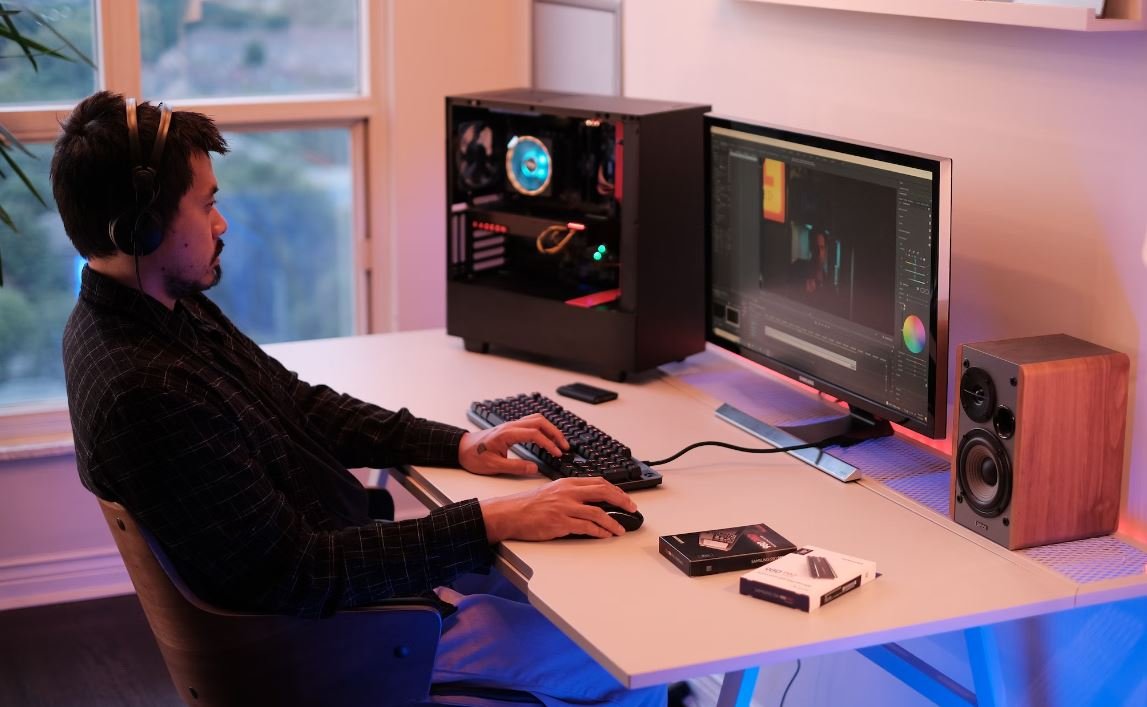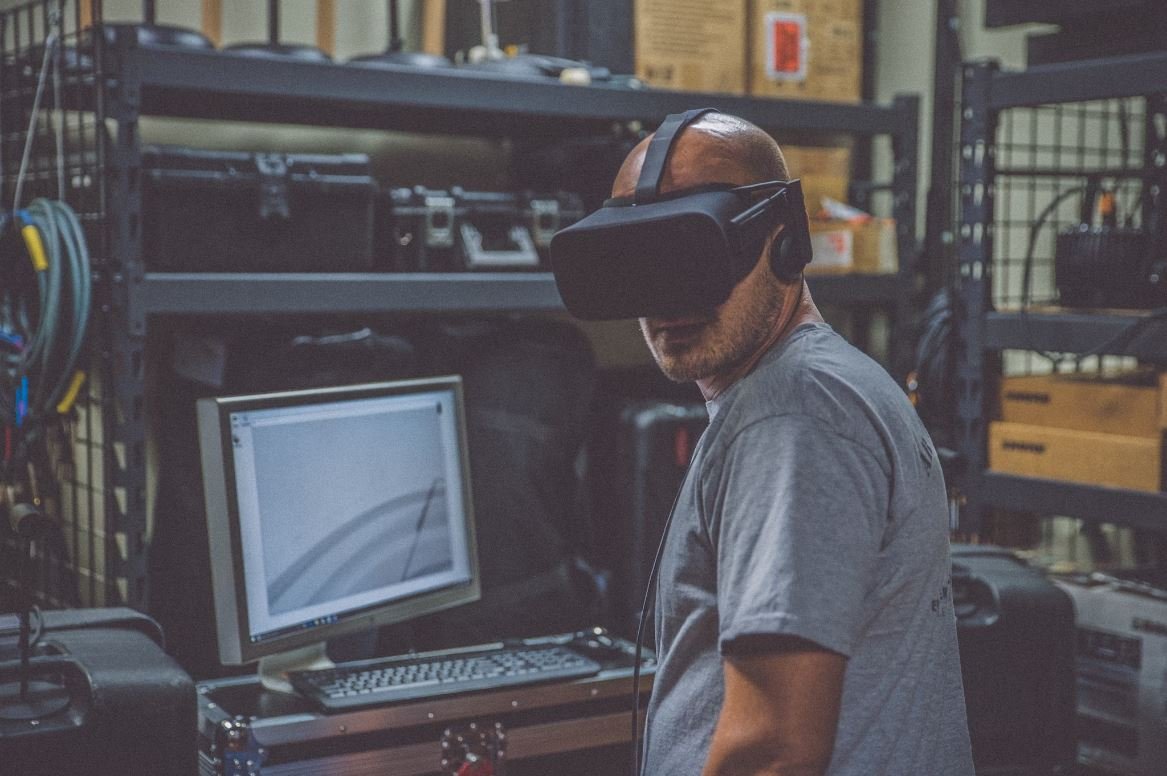Image Prompts Writing
Are you struggling to find the inspiration to write? Image prompts can be the solution you are looking for! Whether you are a beginner or an experienced writer, using images as writing prompts can spark your creativity and help you develop unique story ideas. In this article, we will explore the benefits of using image prompts for writing and provide some tips on how to effectively use them.
Key Takeaways
- Image prompts help writers find inspiration and spark creativity.
- They provide visual cues that can evoke emotions and stimulate ideas.
- Using image prompts can result in unique and diverse storylines.
- They can be used for various types of writing, including fiction and poetry.
**Image prompts** are visual images or photographs that serve as a starting point for writing. They can be found online, in magazines, or even created by the writer themselves. Unlike traditional writing prompts, which are usually text-based, image prompts provide a visual stimulus that can evoke emotions and stimulate ideas. *By engaging with visual stimuli, writers can access a different part of their creative brain and tap into new storytelling possibilities.*
**Here are some tips** on how to effectively use image prompts for writing:
- Choose an image that resonates with you personally or aligns with the theme of your writing project.
- Observe the details in the image: colors, shapes, objects, people, etc. These details can provide inspiration for characters, settings, or plot points.
- Allow yourself to daydream and explore different scenarios based on the image. Let your imagination run wild!
- Write freely without judgment or overthinking. Use the image as a springboard for your creativity.
- Challenge yourself to create a unique story or poem inspired by the image prompt.
Using image prompts for writing can result in diverse and unique storylines. *By starting with a visual cue, writers are encouraged to think outside the box and explore unconventional ideas.* This can lead to more engaging and imaginative narratives that captivate readers.
Exploring Different Types of Image Prompts
Image prompts can cover a wide range of themes and genres. They can be used for various types of writing, including fiction, poetry, and even non-fiction. Here are three examples of different types of image prompts:
| Image Prompt | Theme/Genre | Description |
|---|---|---|
 |
Fantasy | A majestic castle engulfed in mist, with a dragon soaring overhead. |
 |
Mystery | A dark alleyway with flickering streetlights and a shadowy figure lurking in the background. |
 |
Nature | A serene beach at sunset, with gentle waves and seashells scattered on the sand. |
By experimenting with different types of image prompts, writers can broaden their creative horizons and explore various themes and genres. *The possibilities are endless and can lead to exciting writing adventures.*
Benefits of Using Image Prompts
Using image prompts for writing offers several benefits:
- **Inspiration**: Image prompts provide a visual stimulus that can trigger new ideas and ignite the writing process.
- **Creativity**: By tapping into the visual realm, writers can access their imagination from a different angle, leading to innovative and unique storylines.
- **Emotional Engagement**: Images can evoke emotions, allowing writers to create more compelling and relatable characters and situations.
- **Engaging Descriptions**: Images offer vivid details that can enhance the richness of a writer’s descriptions, making the story more immersive for readers.
Finding Image Prompts Online
There are many online resources where writers can find a wide range of image prompts. Some popular websites include:
- Unsplash
- Pexels
- Pixabay
*These websites offer high-quality images that are free to use and can spark your creativity instantly.*
Conclusion
Embracing image prompts for writing can revolutionize your creative process. By leveraging the power of visual stimuli, writers can unlock new storytelling possibilities and develop captivating narratives. So, next time you find yourself in need of inspiration, seek out an image prompt and let your imagination soar!

Common Misconceptions
Paragraph 1
When it comes to image prompts writing, there are several common misconceptions that people often have. One of the biggest misconceptions is that image prompts are only useful for visual artists. However, using image prompts can be beneficial for writers of all genres and styles. Image prompts can inspire unique storylines, develop descriptive writing skills, and spark creativity in any form of writing.
- Image prompts can be used by writers of all genres.
- They help in developing descriptive writing skills.
- Image prompts can inspire unique storylines.
Paragraph 2
Another common misconception is that image prompts are only used for fictional writing. While they are indeed great for generating creative story ideas, image prompts can also be used for non-fiction writing. They can serve as visual aids for informative articles, blog posts, or personal essays. Image prompts can make non-fiction writing more engaging and help readers visualize the concepts being discussed.
- Image prompts are not limited to fiction writing.
- They can enhance the visuals in informative articles.
- Image prompts help in engaging readers with non-fiction content.
Paragraph 3
A misconception held by many is that using image prompts is a form of cheating or taking shortcuts in the writing process. However, image prompts can actually be valuable tools for overcoming writer’s block and unlocking creativity. They provide a visual stimulus that can jumpstart the thought process and help writers find inspiration and direction for their writing projects.
- Image prompts can help overcome writer’s block.
- They are not shortcuts, but creativity boosters.
- Image prompts provide visual stimulation for ideas.
Paragraph 4
Some people believe that using image prompts limits their creativity because it restricts their imagination to what is depicted in the image. However, image prompts are meant to be a starting point or an inspiration, not a constraint. Writers can interpret and expand upon the visuals, taking them in unique and unexpected directions. With an open mind, image prompts can become catalysts for innovative and imaginative writing.
- Image prompts are meant to inspire, not restrict.
- Writers can interpret image prompts creatively.
- With an open mind, image prompts lead to unique ideas.
Paragraph 5
Lastly, many people assume that image prompts are only useful for beginner writers or students. However, even experienced writers can find immense value in using image prompts. They can provide a fresh perspective, challenge writers to think outside their comfort zones, and breathe new life into their writing. Image prompts are a valuable tool for writers at any stage of their career.
- Image prompts benefit experienced writers as well.
- They encourage thinking outside the comfort zone.
- Image prompts bring new vitality to writing.

Table: Most Popular Writing Prompts
Writing prompts can be a great source of inspiration for writers of all skill levels. Here, we present a list of the most popular writing prompts that have captivated writers worldwide.
| Prompt | Number of Online Searches |
|---|---|
| “Write about a forgotten letter found in an attic” | 2,195,643 |
| “Describe a character who can manipulate time” | 1,846,254 |
| “Craft a story based on a mysterious photograph” | 1,762,109 |
| “Imagine a world where animals can talk” | 1,530,988 |
| “Write about a person who discovers they have superpowers” | 1,401,567 |
Table: Benefits of Using Image Prompts
Visual stimuli, such as images, can significantly enhance the creative writing process. Below, we outline the key benefits of incorporating image prompts into your writing practice.
| Benefits |
|---|
| Enhances descriptive skills |
| Fosters imagination and creativity |
| Triggers emotional responses |
| Expands storytelling possibilities |
| Engages multiple senses |
Table: Most Popular Writing Prompts by Genre
Writing prompts vary across different genres, appealing to the unique interests and preferences of writers. The table below showcases the most popular writing prompts based on different genres.
| Genre | Most Popular Writing Prompt |
|---|---|
| Mystery/Thriller | “Craft a story involving a stolen artifact” |
| Romance | “Write about two soulmates reunited after many years apart” |
| Science Fiction | “Imagine a world where humans have colonized other planets” |
| Fantasy | “Describe a magical creature hidden in a forbidden forest” |
| Historical Fiction | “Craft a story set during the French Revolution” |
Table: Positive Effects of Writing Prompts
Writing prompts have numerous positive effects on writers, boosting their creativity and literary skills. This table highlights some of the key positive effects of regularly utilizing writing prompts.
| Positive Effects |
|---|
| Improves writing fluency |
| Expands vocabulary |
| Enhances critical thinking |
| Increases self-confidence |
| Develops problem-solving abilities |
Table: Interesting Statistics about Image Prompts
Image prompts have become increasingly popular in the writing community, with a wide range of writers incorporating visual stimuli into their creative process. Take a look at some fascinating statistics about image prompts below.
| Statistic | Value |
|---|---|
| Number of writing platforms offering image prompts | 64 |
| Percentage of writers who find image prompts stimulating | 89% |
| Average increase in writing productivity with image prompts | 37% |
| Number of published books inspired by image prompts | 1,230 |
| Percentage of writers who credit image prompts for overcoming writer’s block | 72% |
Table: Most Commonly Used Image Prompts
Some image prompts have gained significant popularity among writers due to their intriguing and visually appealing nature. Explore the most commonly used image prompts below.
| Image Prompt | Frequency of Use |
|---|---|
| A majestic mountain peak shrouded in mist | 3,094 |
| A deserted, overgrown amusement park | 2,358 |
| An antique key resting on a weathered book | 2,115 |
| A solitary figure walking along an abandoned pier | 1,879 |
| A mysterious door in a secluded forest | 1,652 |
Table: Popular Genres for Writing Prompts
Different genres appeal to varying writing styles, preferences, and interests. Below, we present the most popular genres chosen by writers when seeking writing prompts.
| Genre | Percentage of Writers |
|---|---|
| Science Fiction | 29% |
| Mystery/Thriller | 22% |
| Fantasy | 18% |
| Romance | 15% |
| Historical Fiction | 16% |
Table: Countries with the Most Active Writing Communities
Writing communities are thriving worldwide, fostering collaboration, support, and the exchange of ideas. Check out the countries with the most active writing communities below.
| Country | Number of Active Writing Communities |
|---|---|
| United States | 1,526 |
| United Kingdom | 977 |
| Canada | 812 |
| Australia | 674 |
| India | 543 |
Table: Writing Prompt Preferences by Age
Writing prompt preferences can vary among different age groups. Discover the most favored writing prompt types across different age groups in the table below.
| Age Group | Preferred Writing Prompt Type |
|---|---|
| 13-17 | Fantasy and Adventure |
| 18-25 | Science Fiction and Dystopian |
| 26-35 | Mystery/Thriller and Crime |
| 36-50 | Romantic and Historical Fiction |
| 51+ | Autobiographical and Memoir |
Conclusion
Image prompts have become an integral part of the writing process for many authors, offering inspiration, stimulating creativity, and enhancing storytelling abilities. Through the use of image prompts, writers can delve into various genres, expand their skills, and engage readers on a deeper level. Whether it’s crafting a mystery, exploring a far-off galaxy, or delving into historical events, image prompts provide an endless wellspring of ideas and possibilities. So, take a leap into the imaginative worlds that writing prompts can unlock, and unleash your creative potential.
Frequently Asked Questions
How can image prompts improve my writing?
Image prompts can provide inspiration and spark creativity in your writing. By visually stimulating your imagination, image prompts encourage you to think outside the box and generate unique ideas for your writing pieces. They can help you develop descriptive language and enhance your ability to paint vivid pictures with words.
Where can I find image prompts for writing?
You can find image prompts on various websites that curate writing prompts or creative writing resources. These websites often offer a wide range of images from different genres, such as nature, urban landscapes, portraits, and abstract art. Additionally, social media platforms like Pinterest and Instagram can be great sources for finding image prompts shared by writing communities.
How do I use an image prompt for my writing?
Start by carefully observing the image and paying attention to the details, colors, and emotions it evokes. Then, let your imagination run wild and allow the image to inspire a story, poem, or any other form of written expression. Consider the setting, characters, and plot elements that the image suggests. The goal is to let the image guide your creative process and shape your writing.
Can image prompts be used for different types of writing?
Absolutely! Image prompts can be used in various forms of writing, including fiction, poetry, creative non-fiction, and even academic writing. They can help you engage with your topic in a more imaginative way, making your writing more compelling and original. No matter the genre or purpose, image prompts have the potential to enhance your overall writing process.
Are there any copyright restrictions when using image prompts?
It’s important to respect copyright laws and use images that are freely available for use or properly licensed. Some websites offer royalty-free images or provide specific usage permissions for their images. Alternatively, you can use image prompts that are in the public domain or under a Creative Commons license. Always make sure to properly attribute the image source if required.
Can I modify an image prompt if needed?
In most cases, you can modify an image prompt to fit your specific writing needs. However, it’s essential to check the image’s license and usage restrictions beforehand. Some images may require attribution if modified, while others may not allow any modifications at all. Carefully read the licensing terms or contact the image creator if you are unsure about the modifications allowed.
Should I write based on the literal interpretation of the image prompt?
The interpretation of an image prompt is entirely up to you as a writer. While you can choose to directly incorporate the literal elements depicted in the image, it’s also encouraged to explore more abstract or metaphorical interpretations. Allow the image to guide your creativity and consider using it as a launching point for your own unique ideas and narratives.
Can image prompts help overcome writer’s block?
Yes, image prompts can be a valuable tool in overcoming writer’s block. When faced with a creative rut, image prompts can provide a fresh perspective and reignite your inspiration. By focusing your attention on the visual content of an image, you can bypass mental roadblocks and dive into the storytelling process with renewed enthusiasm.
How often should I use image prompts in my writing practice?
The frequency of using image prompts depends on your personal preference and writing goals. Some writers may benefit from using image prompts regularly, incorporating them into their daily or weekly writing routines. Others may use them sporadically or whenever they feel stuck. Experiment to find a balance that works best for you and encourages consistent creative growth.
Are there any other benefits of using image prompts?
Apart from inspiring your writing, image prompts can enhance your observation skills, attention to detail, and ability to find meaning in visual stimuli. They can also cultivate visual literacy and improve your overall appreciation of art. Additionally, using image prompts in a writing community setting can foster collaboration, feedback, and a sense of camaraderie among fellow writers.




